Ram trucks have earned a formidable reputation across North America as powerful, durable, and rugged machines built for serious work and heavy lifting.
Whether you’re pulling a trailer across state lines or navigating a muddy backcountry road, Ram has long positioned itself as a go-to brand for both blue-collar professionals and everyday truck enthusiasts.
Yet, for all the torque, horsepower, and bold styling that make Ram trucks so appealing, not every model year delivers equally when it comes to longevity and resilience. Some Ram trucks are near-immortal workhorses, pushing past 300,000 miles with grace. Others, sadly, rust into obsolescence before they even hit 100,000 miles.
This wide discrepancy has left many truck buyers puzzled. How can one generation of Ram become a legend in the diesel community, while another fails prematurely due to underbody rust or frame corrosion?
The answer lies in the complex evolution of Ram as a brand, transitioning from Dodge Ram under Chrysler to a standalone Ram Trucks division under Fiat Chrysler Automobiles (now Stellantis).
During this transition, build quality, material sourcing, engineering priorities, and even regional assembly plant practices varied significantly. As a result, some years are solid gold, and others are cautionary tales.
Understanding which Rams will serve you reliably for decades and which ones might disappoint within a few winters is crucial—not just for first-time buyers but for those returning to the brand after previous ownership. A truck is more than just a mode of transportation for many—it’s a long-term investment, a mobile office, or even a trusted partner on the job site.
The last thing anyone wants is to be blindsided by a rotted-out frame on an otherwise mechanically sound vehicle, or to overpay for a high-mileage truck that’s on the verge of catastrophic engine failure.
That’s why we’ve divided this article into two essential parts. First, we celebrate the best of Ram—five trucks known to outlast expectations and deliver solid service well past the 300,000-mile mark. These trucks are not just anecdotal legends; they are supported by extensive owner reports, real-world data, and a strong presence in high-mileage communities.
Then, we turn the lens toward five Rams that didn’t quite live up to the promise, plagued by early-onset rust and structural degradation that left owners frustrated and mechanics shaking their heads.
We won’t sugarcoat the details. You’ll find honest assessments, specific model years, engine options, and the known pitfalls or strengths of each truck. Whether you’re buying used, holding onto your current rig, or just curious about how your Ram stacks up, this guide is designed to help you make smarter decisions and avoid expensive surprises.
Because when it comes to pickup trucks, longevity isn’t just about what’s under the hood—it’s about how well the whole machine holds together. Let’s dive into the Rams that run forever—and the ones that don’t.
Also Read: Top 10 Budget-Friendly & Luxury Trucks You Can Buy
5 Ram Trucks That Live Past 300,000 Miles

1. 2006–2007 Ram 2500 with 5.9L Cummins Diesel
When truck enthusiasts talk about legendary diesel engines, the 5.9L Cummins that powered the 2006–2007 Ram 2500 is often at the top of the list. This engine is the final version of the 5.9L line before Ram transitioned to the more complex 6.7L Cummins, and it represents the pinnacle of balance between power, simplicity, and reliability.
Unlike modern diesels burdened with emissions systems like EGR coolers, DPFs, and SCR/DEF components, this iteration of the 5.9L is mechanically simpler and more robust. As a result, it’s far less prone to the expensive failures that plague later models.
The engine’s design is inherently overbuilt—iron block, forged internals, a bulletproof injection pump (especially the post-2003 common-rail system), and an easily serviceable turbo setup.
Owners of the 2006–2007 Ram 2500 often report their trucks surpassing 400,000 or even 500,000 miles with only routine maintenance and minor repairs.
Common services include oil changes every 7,500 miles, fuel filter changes, and valve lash adjustments every 100,000 miles. Because of the engine’s conservative tuning and low-revving nature, there’s minimal stress on internal components, which dramatically extends life expectancy.
The transmission options also contribute to the longevity. Paired with either the robust 48RE automatic or the NV5600/NV4500 manual transmissions, these trucks hold up well under heavy use, particularly when towing. They’re favorites among RV haulers, hotshot drivers, and agricultural users who demand maximum uptime from their rigs.
What truly sets this truck apart is that the rest of the package matches the engine’s durability. The 2006–2007 Ram 2500 uses solid axles front and rear, thick-gauge steel in the frame, and relatively corrosion-resistant undercoating compared to earlier models.
While some body panels may begin to show signs of age, the truck remains mechanically solid. As a result, this truck has become highly sought after in the used market.
Prices have stayed high due to its reputation, with clean, low-mileage examples fetching as much as newer models—proof that this Ram is built to last and worth every penny for those seeking a long-haul workhorse.
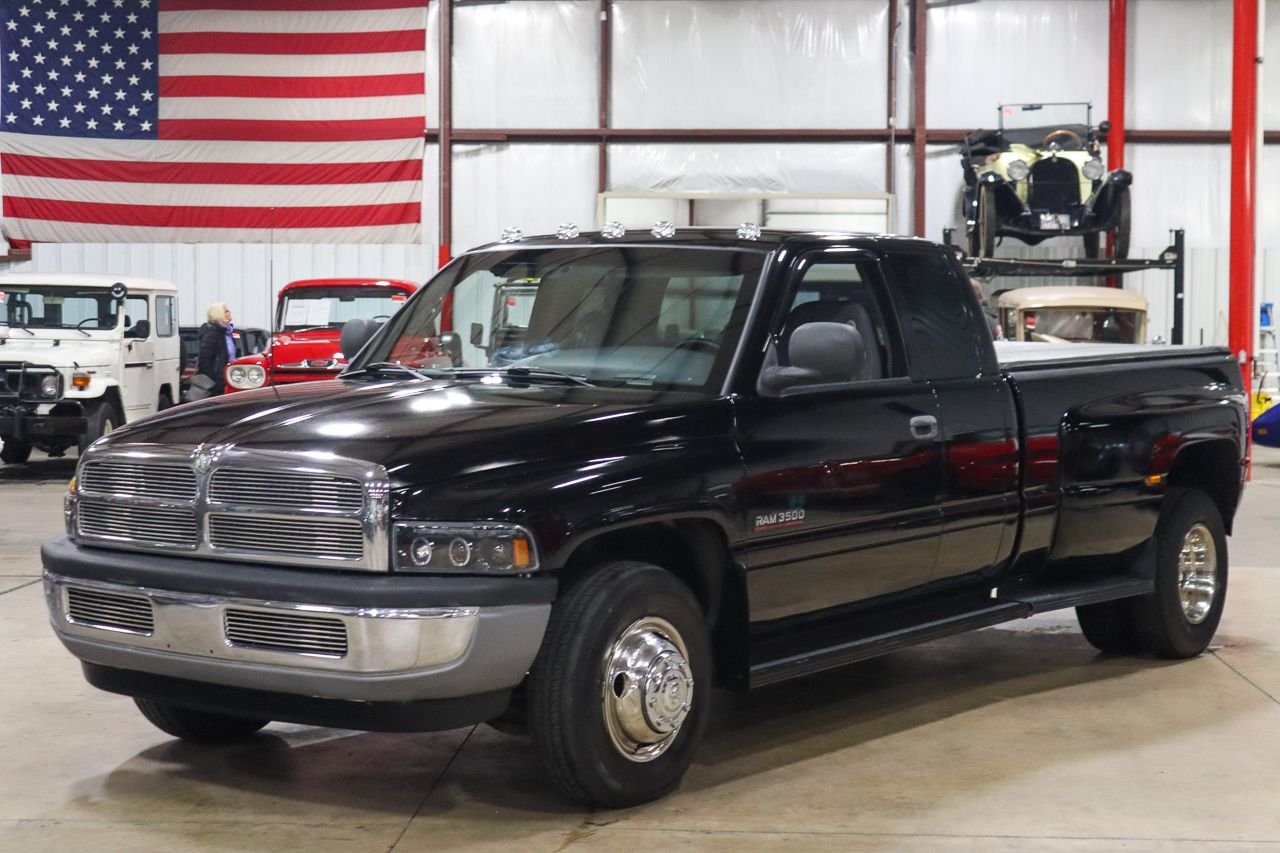
2. 1994–2002 Ram 2500/3500 with 12-Valve Cummins Diesel
If there’s a truck that built Ram’s reputation in the diesel world, it’s the 1994–2002 Ram 2500 and 3500 equipped with the 5.9L 12-valve Cummins. Introduced in the second-generation Ram platform, this inline-six turbo-diesel engine is a marvel of old-school engineering.
Entirely mechanical, with no computers managing fuel delivery, the 12-valve Cummins is revered for its simplicity, ease of repair, and indestructible design.
These engines use a Bosch P7100 injection pump—a fuel system that is not only reliable but also tunable for extra power without sacrificing longevity. This makes it a favorite among diesel enthusiasts who want a reliable base to modify.
What makes this Ram unique is not just its powertrain but its ability to rack up astronomical mileage with minimal effort. There are documented cases of these trucks passing the 600,000-mile mark on the original block and head. It’s common to find models from this generation still used as daily drivers or work trucks, even in tough environments.
The secret lies in routine maintenance—regular oil and coolant changes, clean fuel filters, and proper timing settings. Because these trucks predate complex emissions systems, there’s less to go wrong. Many owners report that if the truck starts to run poorly, it’s often due to a mechanical issue that can be fixed with basic tools and a little know-how.
However, it’s worth noting that the body and chassis of the 2nd-gen Ram were not as robust as the engine. Rust on the rockers, cab corners, and bed sides is common, especially in salt-prone regions. But this hasn’t stopped the 12-valve Cummins trucks from achieving cult status.
Many owners choose to restore or upgrade the body because the engine and drivetrain are simply too good to let go. With an enthusiastic aftermarket, endless resources for parts, and a thriving online community, these trucks are more than just reliable—they’re iconic. Whether stock or modified, the 12-valve Ram is a diesel legend built to outlast generations.

3. 2010–2012 Ram 1500 with 5.7L HEMI V8
While diesel-powered Rams dominate longevity discussions, gas-powered trucks deserve their place at the table, particularly the 2010–2012 Ram 1500 with the 5.7L HEMI V8. By this time, the HEMI had gone through multiple refinements since its reintroduction in the early 2000s.
The 5.7L V8 in these model years featured Variable Valve Timing (VVT), improved combustion chamber design, and better engine cooling—all of which contributed to greater efficiency and durability. It’s an engine known for solid low-end torque, smooth operation, and relatively low maintenance requirements, especially when compared to modern turbocharged alternatives.
What sets this era apart is that it marked a shift in Ram’s overall quality and design philosophy. The 2010 refresh introduced a multi-link coil spring rear suspension—a significant departure from the traditional leaf springs, offering better ride quality without compromising payload.
Build quality also improved dramatically compared to previous generations. The interior saw upgraded materials, better fit and finish, and more attention to ergonomics. In terms of reliability, the 5.7L HEMI’s Achilles’ heel—such as cam/lifter failures or MDS-related issues—was far less frequent in these years due to better component sourcing and engineering revisions.
Owners routinely report these trucks crossing 300,000 miles with no major engine or transmission repairs. As long as you stay on top of maintenance (oil changes every 5,000 miles, spark plug replacements every 30,000 to 40,000 miles, and transmission fluid service every 60,000 miles), these HEMI engines just keep ticking.
They’re also easier and cheaper to maintain than their diesel counterparts. With the ability to tow 8,000–10,000 lbs, depending on configuration, the 2010–2012 Ram 1500 with the 5.7L HEMI strikes a perfect balance between utility and long-term reliability, especially for those who want a solid half-ton truck without diesel complexity.
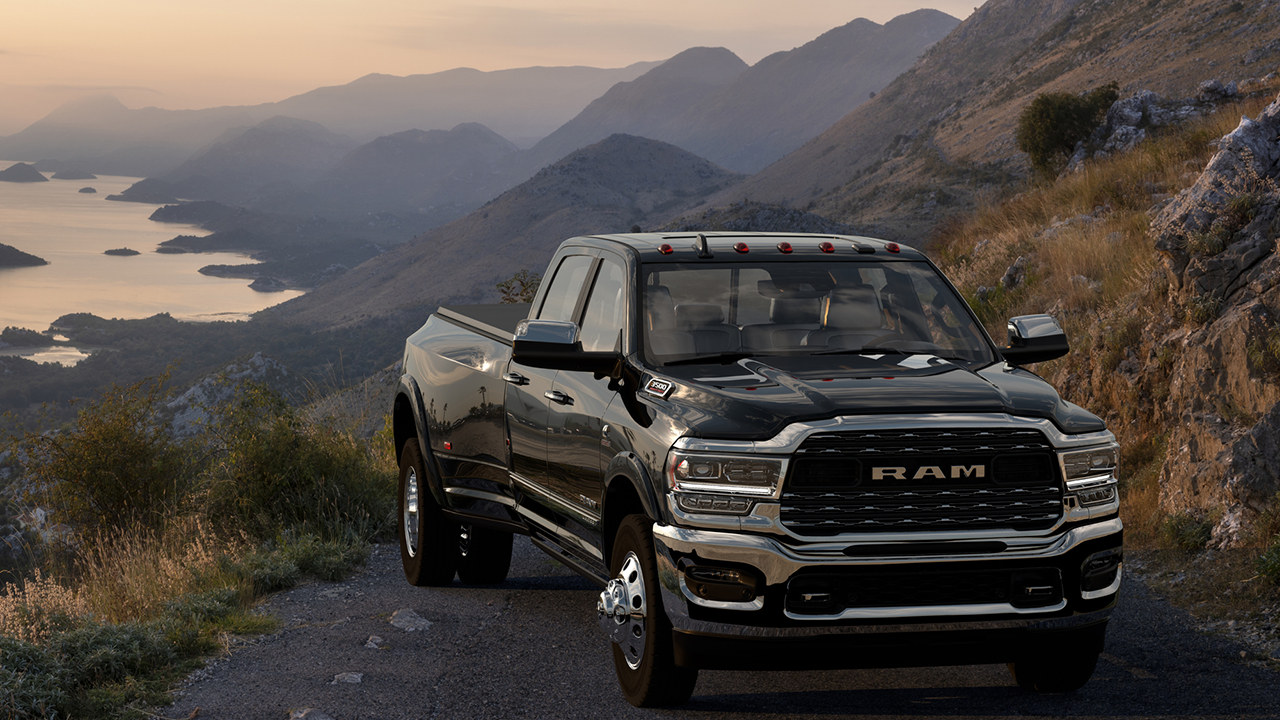
4. 2013–2018 Ram 3500 with 6.7L Cummins Diesel and Aisin Transmission
The 6.7L Cummins-powered Ram 3500 from 2013 to 2018 represents the modern evolution of Ram’s heavy-duty lineup. By this period, Ram had doubled down on its commitment to being the king of diesel towing, and this truck proves it in both durability and functionality.
Equipped with the advanced 6.7L Cummins inline-six turbo diesel, these trucks also gained the option of the Aisin AS69RC 6-speed automatic transmission—an upgrade from the standard 68RFE. This powertrain combo turned the Ram 3500 into a highway freight train capable of towing upwards of 30,000 pounds with confidence and consistency.
Despite being loaded with emissions equipment, these trucks are engineered for longevity, especially when properly maintained. While the EGR, DPF, and SCR/DEF systems can become problematic if neglected, a well-kept 6.7L Cummins can easily go beyond 400,000 miles.
Owners who perform consistent oil changes, regularly clean or replace emission filters, and avoid idling for long periods (which clogs DPFs) report exceptional service life. Additionally, the Aisin transmission is built for durability—it’s used in medium-duty commercial trucks and rarely needs rebuilding before 300,000 miles if the fluid is changed every 60,000 miles.
The truck’s chassis, suspension, and cab design also reflect its long-term ambitions. The frame is fully boxed and e-coated for rust protection, while the axles (especially the rear AAM 11.5″ or 11.8″ setups) are built to withstand brutal use.
The 2013 refresh also improved cabin insulation, HVAC reliability, and infotainment features, making it a more comfortable place to log long hours. For business owners, RV enthusiasts, and off-grid adventurers, the 2013–2018 Ram 3500 with a 6.7L Cummins and Aisin transmission is one of the most reliable and long-lasting trucks of the modern diesel era.
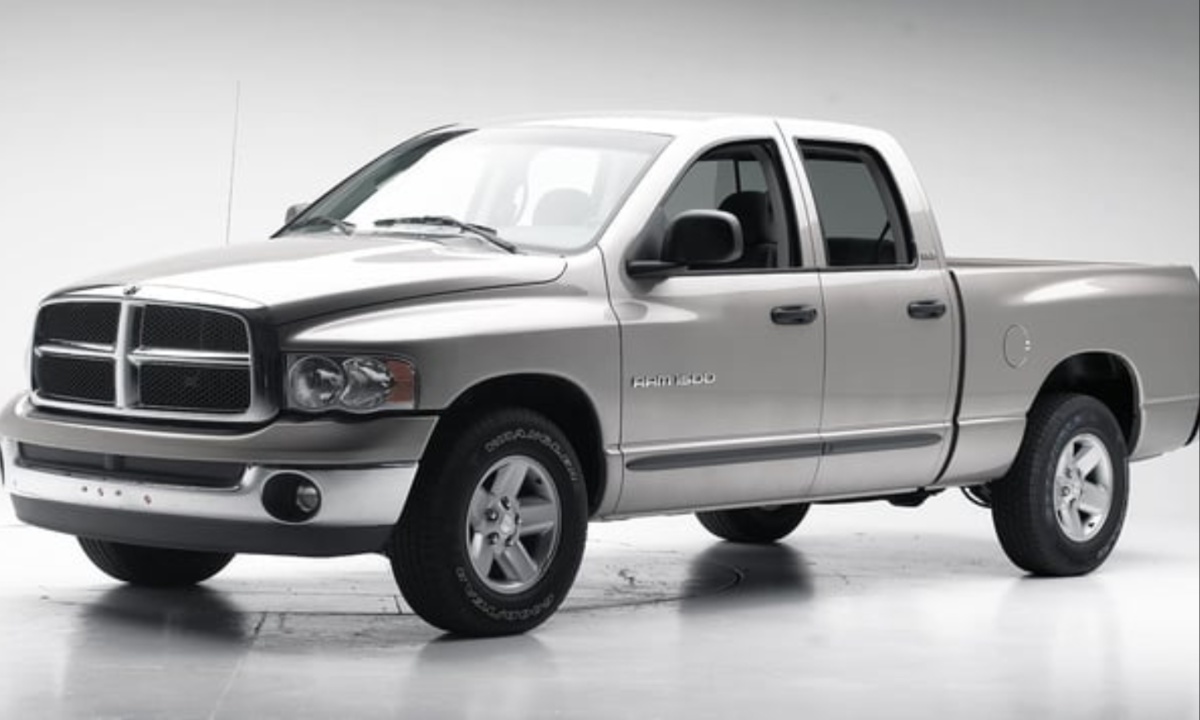
5. 1994–2001 Ram 1500 with 5.2L and 5.9L Magnum V8s
Before HEMI became a household word again, Chrysler’s Magnum V8s were the backbone of Dodge’s truck lineup. The 5.2L and 5.9L Magnum V8s used in the 1994–2001 Ram 1500s were stout, straightforward pushrod engines that earned a reputation for being hard to kill. These engines were descendants of the legendary LA small block family, and while not
the most fuel-efficient or modern, they offered a great balance of torque, ease of maintenance, and long-term reliability. Built with cast-iron blocks and conservative tuning, these powerplants were ideal for long service life, especially in rural or fleet applications.
The simplicity of these engines plays a huge role in their longevity. With relatively few sensors, no variable valve timing, and no cylinder deactivation systems to worry about, there’s just less to go wrong. These trucks can often be revived from neglect with basic parts: spark plugs, plug wires, distributor caps, and maybe a water pump or alternator.
Parts are cheap, readily available, and the engines are forgiving of less-than-perfect maintenance routines. It’s common to find old Ram 1500s with well over 300,000 miles still hauling trailers or firewood, particularly in rural America.
However, these trucks aren’t without flaws. Transmission longevity (especially the 46RE and 47RE automatics) was variable, and rust has not been kind to the 2nd-gen Ram bodies. Bed sides, rocker panels, and cab corners often deteriorated before the engine gave up.
Yet, the sheer volume of these trucks still on the road speaks to their mechanical reliability. For DIYers and budget-conscious buyers, a well-maintained Magnum V8 Ram 1500 remains a solid and affordable path to ownership of a truck that won’t quit.
5 Ram Trucks That Rust Before 100,000 Miles (Expanded)
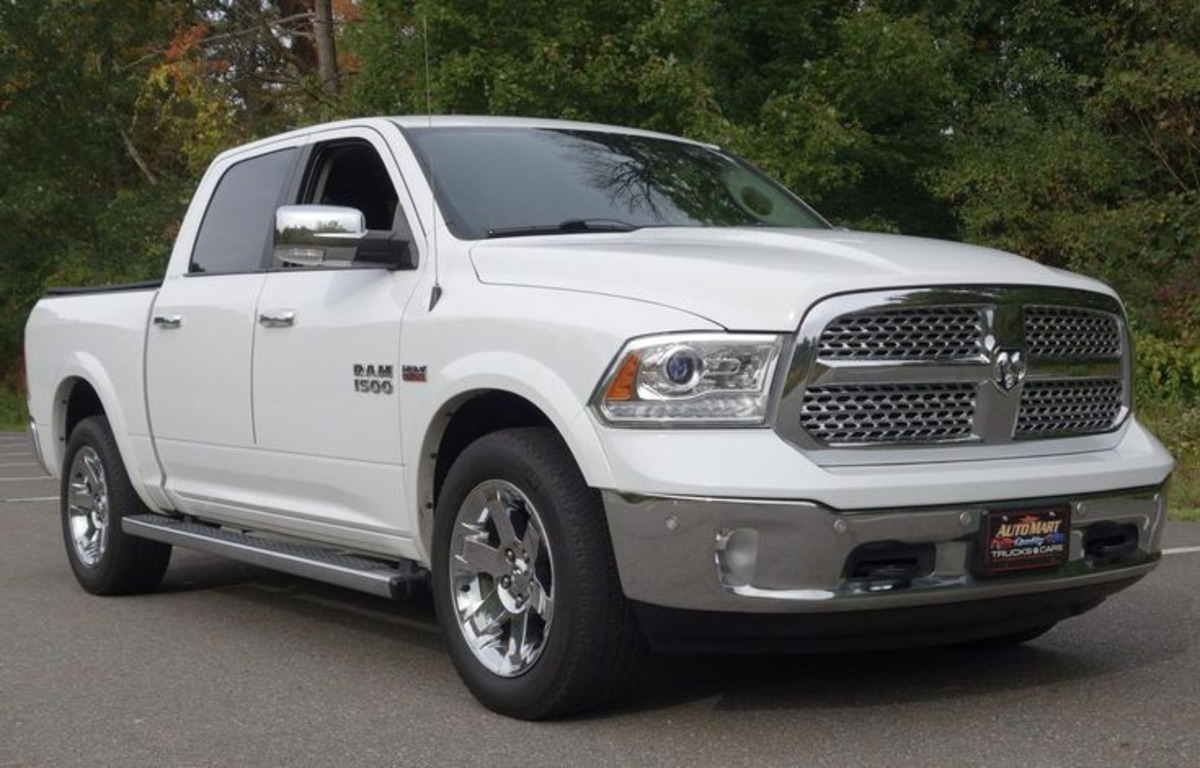
1. 2002–2008 Ram 1500 (3rd Generation)
The 2002–2008 Ram 1500, part of the third-generation overhaul, was a bold redesign that emphasized style and comfort. It brought a more aggressive look, sleeker lines, and a much-improved interior. However, it also introduced a serious long-term flaw: subpar rust resistance.
These trucks, especially those used in northern states with harsh winters and frequent salting of roads, became infamous for premature body corrosion. Rust often started in predictable spots—rear wheel arches, rocker panels, cab corners, and under the doors. In many cases, the corrosion began showing up well before 100,000 miles, even on otherwise well-maintained vehicles.
The issue stemmed partly from design flaws. For one, water would easily collect behind plastic fender flares and in unsealed seams, allowing salt and grime to accumulate and eat through the metal. Additionally, the underbody coatings applied at the factory were inconsistent or inadequate in protecting vital areas of the frame and suspension.
The beds on these trucks were especially susceptible; many owners reported seeing entire sections of the bed floor rot away while the truck was still in active use. Some dealerships even saw trucks come back with rust issues under warranty, but often outside of cosmetic coverage, leaving customers footing the repair bill.
What makes this situation particularly frustrating for owners is that the drivetrains in these trucks were often solid, offering options like the 5.7L HEMI and Magnum V8s that could easily go the distance.
Unfortunately, the bodies couldn’t keep up. The result was a truck that might still run great but fail state inspections due to rusted brake lines, crumbling crossmembers, or sharp body edges from flaking metal.
It’s not uncommon to find 2006 Ram 1500s with under 90,000 miles that are deemed unroadworthy due to frame corrosion or structural weakness. For many, the rust wasn’t just cosmetic—it spelled the early end of the truck’s usable life.

2. 2009–2012 Ram 1500 (Early 4th Generation)
When Ram introduced the fourth generation of its 1500 series in 2009, the redesign received wide acclaim. The new coil-spring rear suspension drastically improved ride quality, and the interior quality was a leap forward. However, while these trucks offered refinement and comfort, they failed to address one of Ram’s lingering issues: rust.
The early years of this generation, specifically 2009 to 2012, continued the legacy of premature corrosion, particularly in the same problem areas that plagued the previous generation.
Rust commonly develops in the wheel wells, lower door panels, undercarriage supports, and especially the tailgate seams. Despite the modernized appearance and structural tweaks, Ram seemingly reused many of the same materials and failed to improve drainage and undercoating.
The inner seams around wheel wells were notorious for trapping water and salt, and in northern states, it didn’t take long for the paint to bubble and the metal to begin flaking. Many owners were caught off guard, seeing significant rust appear in less than five years, sometimes on trucks with fewer than 60,000 miles.
Compounding the issue, these rust-prone areas often developed behind plastic cladding or trim pieces, hiding the problem until it was too late. By the time rust was visible, it had already weakened the panels underneath. Brake and fuel lines were also frequently affected, as they were not always adequately shielded.
While the 5.7L HEMI engine and upgraded transmissions provided excellent mechanical longevity, the structural integrity of the truck became a liability. Even with diligent undercoating and regular washes, many owners found that the rust came faster than expected. For a truck designed to be a flagship of Ram’s innovation, the inability to resist basic environmental wear was a significant flaw.
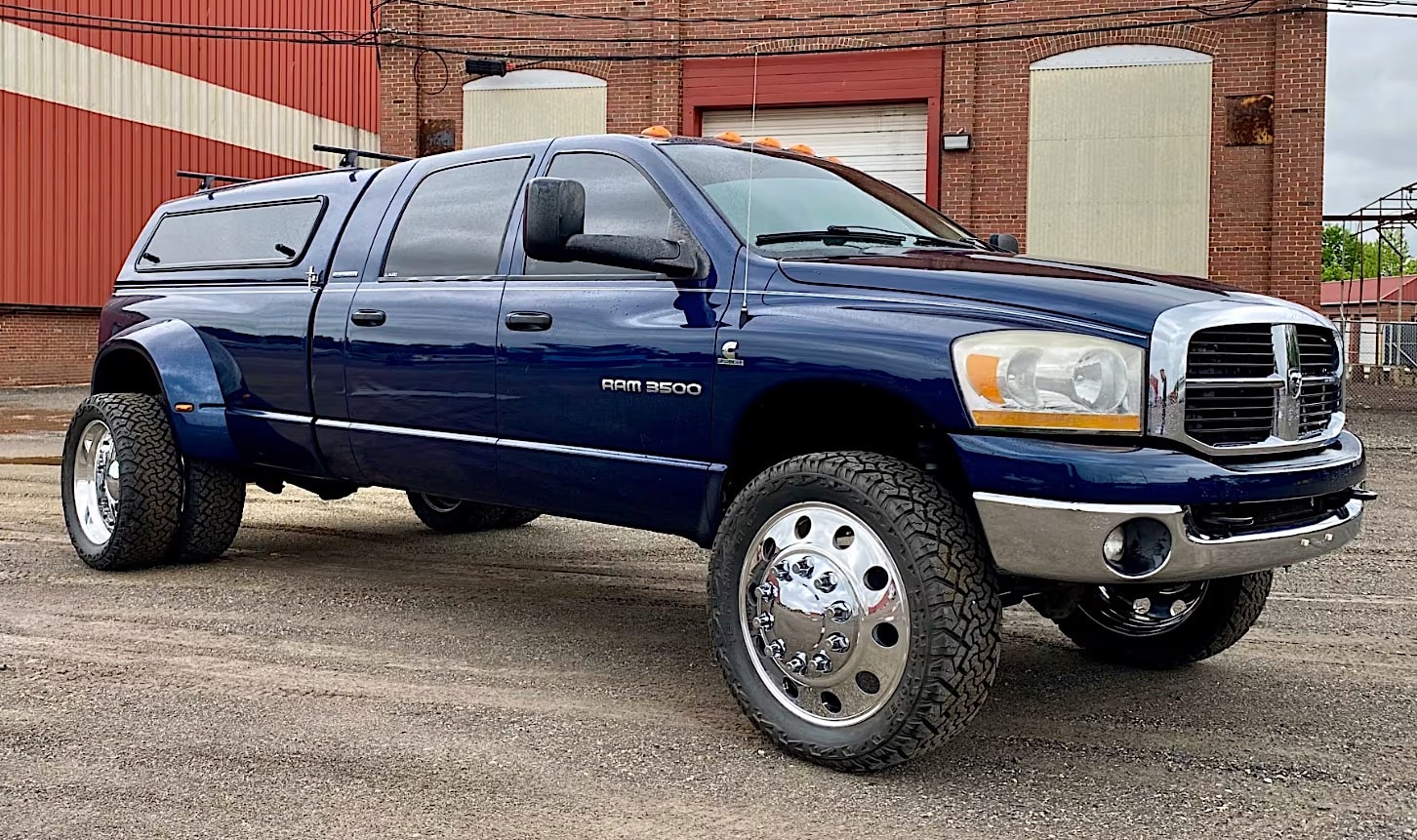
3. 2006–2009 Ram 3500 Chassis Cab (Commercial Variants)
The 2006–2009 Ram 3500 Chassis Cab models were designed for serious work—landscaping, towing, snowplowing, and custom utility bodies. While they offered robust performance, particularly with the 5.9L and 6.7L Cummins diesel options, they were built with a focus on function over finish.
Unfortunately, this functional emphasis came at the cost of longevity, particularly when it came to the frame and underbody components. Chassis Cab models often skipped more rigorous corrosion protection during assembly, leaving them extremely vulnerable to rust, especially in climates with road salt or high moisture.
These trucks lacked some of the rustproofing that the consumer models received, especially in terms of underbody coatings and sealed seams. The frame rails, particularly near suspension mounts and crossmembers, were often inadequately protected.
Combine this with the fact that these trucks were almost always in heavy-use fleets or commercial operations—frequently driven in wet, icy, or dirty conditions—and you have a recipe for rapid decay. In many cases, the rust would begin deep inside structural tubing and spread outward, becoming visible only once the damage was irreversible.
What makes these trucks particularly risky is that many were still in good mechanical shape when the rust issues made them unsafe or uninsurable. The engines and transmissions could easily exceed 300,000 miles, but the body, brake lines, and frames couldn’t match that lifespan.
Several lawsuits and customer complaints emerged during this era about frame failures and suspension component separation due to corrosion.
Some owners tried to salvage the trucks with extensive frame welding and reinforcement, but often the cost outweighed the value. These trucks serve as a cautionary tale: even the toughest powertrains can’t make up for structural vulnerability if the foundation of the vehicle begins to rot from the inside out.
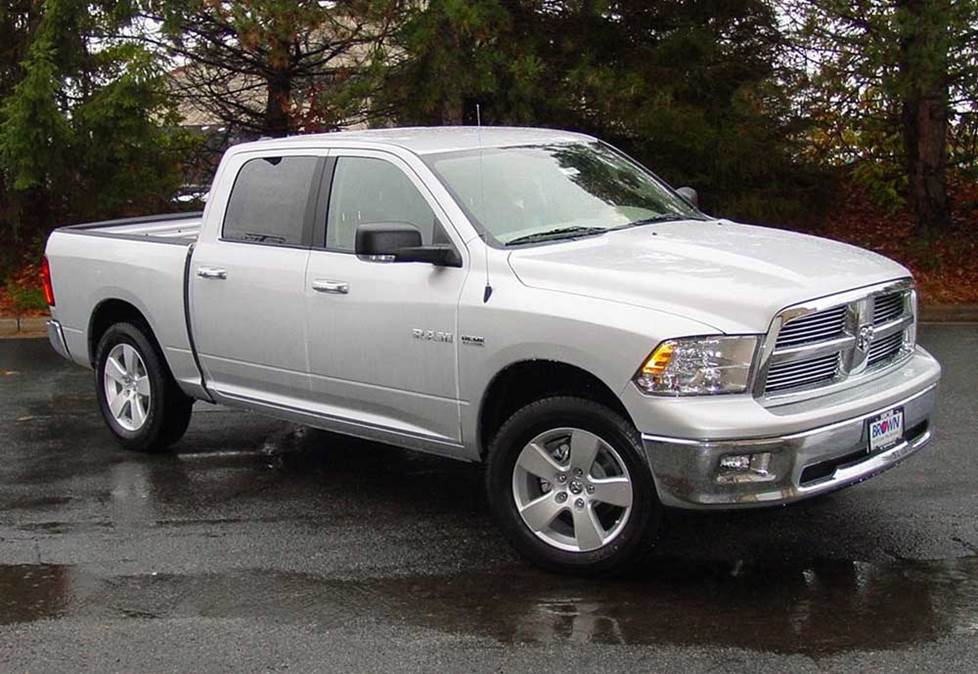
4. 1997–2001 Ram 1500 (Late 2nd Generation)
The second-generation Ram 1500, particularly those produced from 1997 to 2001, is often remembered for its bold styling and mechanical durability. Engines like the 5.2L and 5.9L Magnum V8s proved long-lasting and dependable. Unfortunately, the bodywork and structural elements did not match this mechanical strength.
These late 2nd-gen Rams were some of the worst offenders when it came to premature rust, especially in northern climates and coastal areas. Despite relatively low mileage, many of these trucks suffered catastrophic corrosion by the time they were a decade old—or earlier.
Common problem areas included the rear wheel arches, rocker panels, under-bed supports, door sills, and most concerningly, the frame itself. The frame’s design allowed water and debris to collect in crevices, and the undercoating was minimal or nonexistent in crucial areas.
Brake lines and fuel lines also corroded quickly, sometimes leading to dangerous failures at surprisingly low mileage. It’s not unusual to find trucks with fewer than 100,000 miles that have failed state inspections due to rotted frames or holes in the cab floor.
A contributing factor was also the paint quality and thin primer coats during this era. Paint would chip easily, and once rust began, it spread rapidly beneath the surface. Many owners attempted DIY fixes with bedliner coatings or anti-rust sprays, but without full-body disassembly, these efforts were often too late.
While these trucks remain popular among DIYers and farm owners due to their simple mechanics, the structural issues often turn them into project vehicles rather than roadworthy transportation. They are a classic case of “runs great, looks terrible,” and often need thousands in bodywork just to keep them safe.
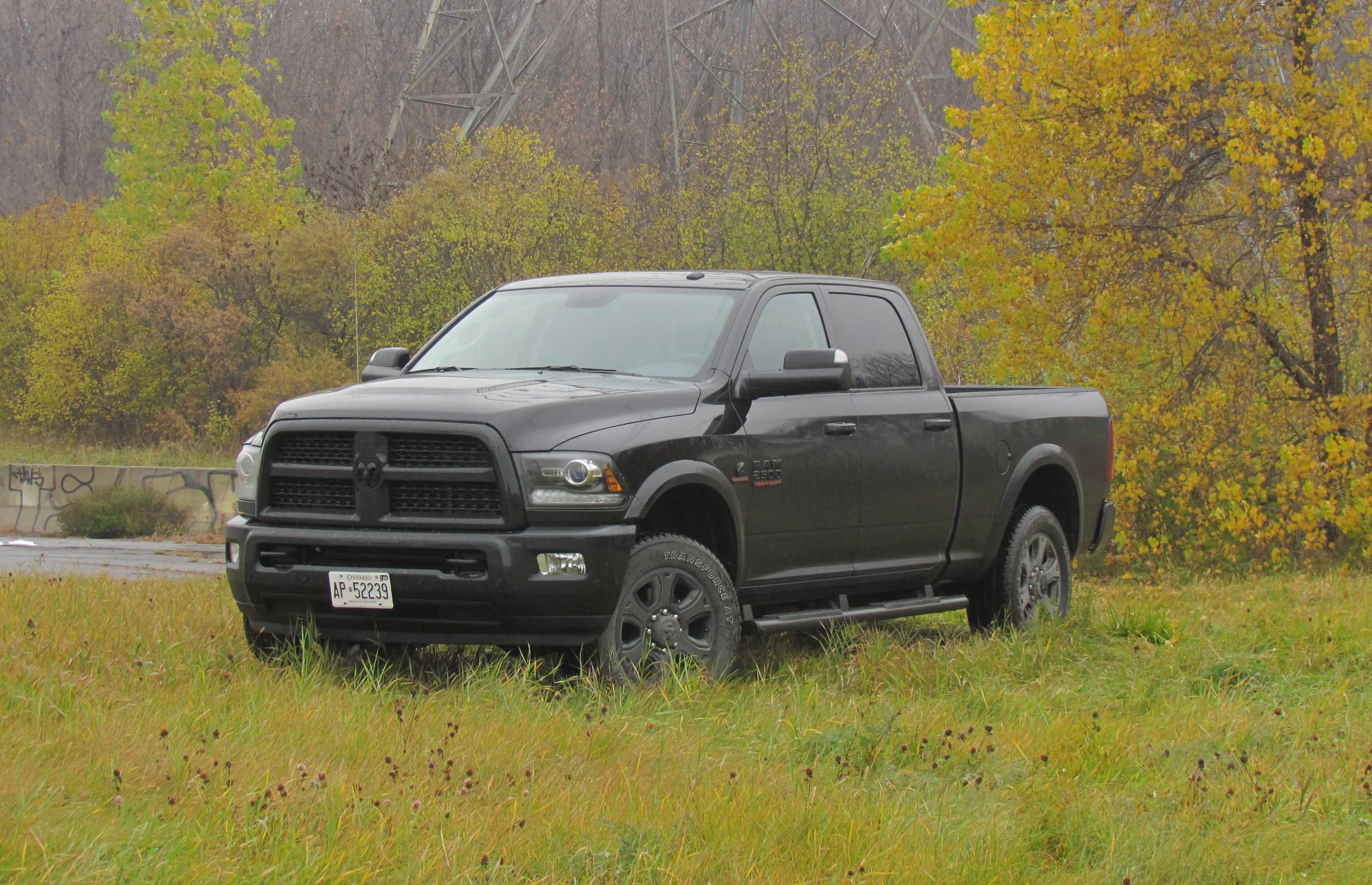
5. 2011–2014 Ram 2500 (Undercarriage and Suspension Corrosion)
The 2011–2014 Ram 2500 was introduced as a modern heavy-duty truck capable of serious towing, commercial duty, and recreational hauling. These models came equipped with the formidable 6.7L Cummins diesel and offered a refined ride, more luxurious interior options, and improved emissions technology.
But hidden underneath that polished surface was a critical weakness: rust-prone suspension components and underbody structure. Despite advancements in other areas, Ram failed to adequately shield the undercarriage from corrosion, especially in snowy and coastal regions.
Problem areas included the rear spring perches, control arm mounts, shock brackets, and fuel tank straps—all of which were exposed to the elements with minimal protection. These components often began to show signs of flaking rust and structural decay within the first 60,000 to 80,000 miles.
Some owners even reported suspension noise or alignment issues caused by rust-related failures long before reaching the six-figure odometer mark. In severe cases, rust compromised the mounting points of leaf springs and control arms, leading to dangerous handling characteristics and expensive repairs.
Despite offering heavy-duty mechanicals and boasting one of the strongest powertrains in the segment, the early 2010s Ram 2500 series failed to inspire long-term confidence due to these hidden structural issues.
The high cost of replacing suspension components, especially when rust has seized bolts or destroyed welds, makes ownership expensive if preventative maintenance is not religiously followed.
Although later model years improved in this regard, the 2011–2014 batch left many owners disillusioned. These trucks could’ve been classics if not for the Achilles’ heel lurking beneath: a ticking time bomb of untreated steel and corrosive exposure.
Also Read: 10 Top-Rated Hatchbacks That Drivers Enjoy Driving
As we close the hood on this deep dive into Ram truck reliability, one truth stands above all: not all Rams are created equal. From the seemingly indestructible workhorses that soldier on past 300,000 miles to the rust-prone models that crumble long before hitting six digits on the odometer, Ram’s lineup is as diverse as the people who drive them.
For every legend like the 5.9L Cummins-powered Ram 2500 that’s still pulling trailers after two decades of service, there’s a counterpart—a 3rd-gen Ram 1500, perhaps—rotting away in a field despite having fewer miles on the clock than a rental sedan.
The distinction between lasting legacy and early demise often comes down to a few key factors: engine and transmission choice, build quality, rust prevention, and how the vehicle was used and maintained. But some of these factors are entirely out of the owner’s control, especially factory choices like poor undercoating, problematic paint adhesion, or drainage designs that invite corrosion.
These design oversights can mean the difference between a truck that grows old with you and one that gets written off just as it’s hitting its stride.
What does this mean for the savvy buyer or long-time owner? It means research matters. Choosing the right model year, the right powertrain, and even understanding where and how the truck spent most of its life are critical pieces of the ownership puzzle.
It also means that sometimes paying a little more upfront for a proven long-hauler is a smarter investment than scoring a deal on a cosmetically appealing truck that’s hiding fatal frame rust beneath the surface.
A high-mileage Ram isn’t necessarily a red flag if it’s one of the bulletproof variants, and a low-mileage one isn’t always a prize if it’s built during one of the rust-troubled years.
It’s also a reminder that maintenance still counts. Even the best-built trucks need consistent care. Rustproofing treatments, regular washing (especially underneath), timely oil and fluid changes, and avoiding excessive idling or harsh towing conditions all contribute to extending your Ram’s usable life.
While some rust-prone models may never match the miles of a Cummins legend, preventative care can at least delay their decline and protect your investment.
Ultimately, the difference between a legendary Ram and a lemon comes down to informed choices and realistic expectations. This guide isn’t just about highlighting the best and worst—it’s about empowering you to take control of your truck’s destiny.
Whether you’re shopping used or evaluating your current vehicle, these insights equip you to make decisions based not on marketing claims or dealership polish, but on real-world data, hard-earned lessons, and thousands of miles of collective experience from the Ram community.
So, whether you’re behind the wheel of a diesel titan or eyeing a budget-friendly HEMI, take this knowledge with you. Because knowing which Ram trucks stand the test of time—and which ones surrender early to rust—isn’t just trivia. It’s the difference between a truck that earns your trust and one that tests your patience.

